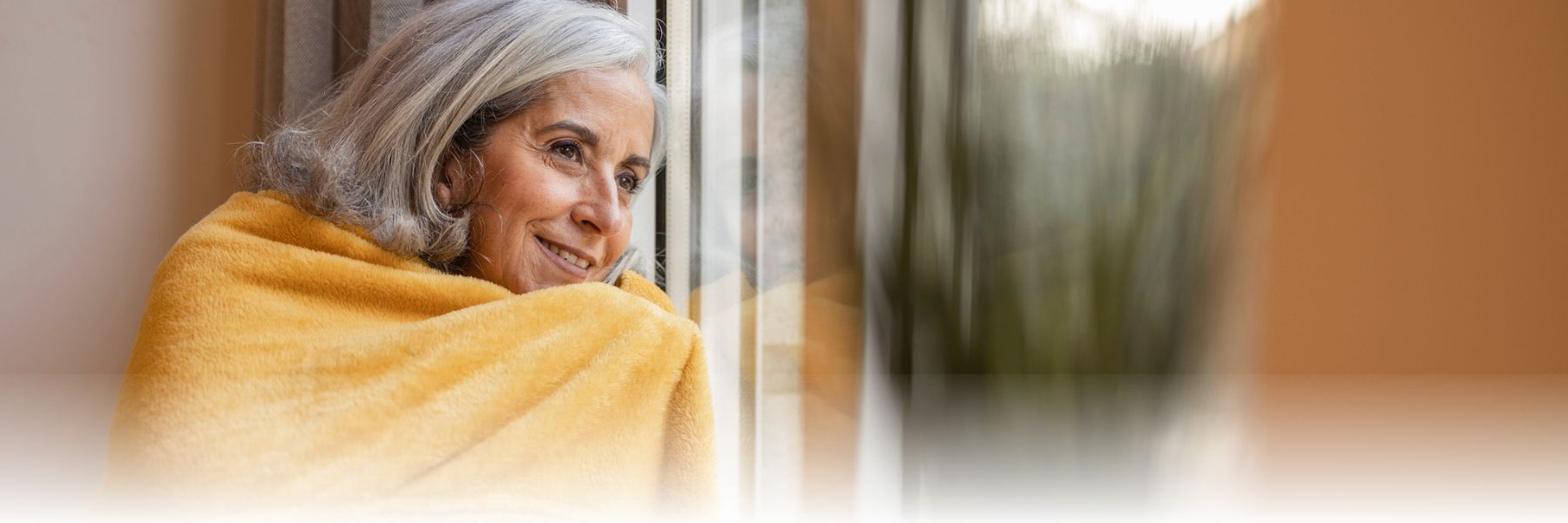
Understanding Seasonal Affective Disorder (SAD)
Now that the winter weather has set in, many people are currently making changes to their daily routines to adjust to the cold temperatures and short daylight hours. If you live in an area that experiences harsh winters, it’s not unusual to spend more time at home or to feel more bored and restless than you do in the summer. For some people, the change in seasons brings about some mental health concerns. If you or your older loved ones show any signs or symptoms of depression in the winter, it might be the result of seasonal affective disorder (SAD). SAD is considered a depressive episode that reoccurs with the change of seasons and often occurs during the winter months.
SAD and Older Adults
While seasonal affective disorder affects all ages, older adults are especially vulnerable in climates that have harsh winters. It is estimated that millions of Americans experience SAD, although many may not know they have this common disorder. SAD is most likely caused by the changes in daylight in the wintertime. The decrease in the amount of natural light can disrupt the body’s circadian rhythm and lead to a number of changes that influence mood. Social and environmental factors may play a role too. Cold temperatures, darkness, and inclement weather can keep people at home and away from their family or friends and this isolation may affect mental and emotional health.
At any time of year, older adults are more likely to struggle with isolation and loneliness. During retirement, you might not have as many opportunities to be social as you once did, especially if you have limited mobility or health issues that make it hard to go out. A lack of social support and regular interaction with friends and family is a major contributor to depression in older adults.
Identifying Symptoms of SAD
The symptoms of SAD are similar to the symptoms of other depressive disorders, but they usually appear in the winter. Here are the most common signs of SAD in older adults.
- Feeling sad or hopeless most of the time
- Loss of interest in hobbies that are usually enjoyable
- Fatigue or lack of energy
- Sleeping much more or much less than usual
- Difficulty concentrating
- Restlessness, agitation, or irritability
- Changes in weight or appetite
- Need for sleep or difficulty staying asleep
- Physical aches or pains, headaches, cramps, or digestive problems that do not have a clear physical cause and do not go away with treatment

Common Treatments for SAD
Seasonal affective disorder is a common mental health condition. The good news is there are many effective strategies to reduce the symptoms and cope with this condition.
1.) Light Therapy
One of the most common treatments for seasonal affective disorder is light therapy, which is the use of a light box to increase your body’s exposure to light in the winter. The light box emits light that has a similar effect on your body as sunlight, so it can be a great way to regulate your circadian rhythm. Light therapy can be used daily, with individuals sitting for 30 minutes in front of a lightbox after waking up in the morning.
2.) Lifestyle Changes
Lifestyle changes can be helpful for managing SAD, too. While you may not be able to completely overcome SAD through lifestyle changes, you can improve your overall sense of well-being and reduce your symptoms by taking active measures to protect your physical and emotional health. Eating healthy and well-balanced meals can improve your energy levels, which may make the symptoms of SAD feel more manageable. Getting exercise each day has been shown to help with mood and energy levels.
Regular social interaction is very helpful for emotional health. Even though it may feel difficult to be social during the cold, dark, and gloomy weather, spending time with family and friends can make a big difference in your emotional state.

3.) Counseling
Counseling is also a great resource for managing SAD. In counseling, you can explore the causes of your seasonal depression and discover factors that might make your symptoms worse. Your counselor will help you find coping skills for negative thoughts so that these thoughts don’t control your beliefs about yourself and the world around you.
4.) Vitamin D
Vitamin D deficiency may increase these problems in people with SAD because vitamin D is believed to promote serotonin activity. In addition to vitamin D consumed in food, the body produces vitamin D when exposed to sunlight on the skin. With less daylight in the winter, people with SAD may have lower vitamin D levels, further reducing serotonin activity.
Because many people with SAD have vitamin D deficiency, vitamin D supplements may help improve symptoms. Talk to a healthcare provider before starting any dietary supplements and discuss the prescriptions or over-the-counter medications you are currently taking. Vitamin D can interact with some medications.
Stay Positive and Beat the Winter Blues
It’s important to recognize the symptoms of Seasonal Affective Disorder (SAD) as they can have a significant impact on your well-being during the winter months. Feeling sad or hopeless, losing interest in enjoyable activities, experiencing fatigue, changes in sleep patterns, difficulty concentrating, and physical symptoms are all common signs of SAD. If you or someone you know is experiencing these symptoms, it’s essential to seek help and support. Remember, you’re not alone in facing the winter blues!
For more great tips on how aging adults can beat the winter blues and stay healthy, The Ohio Masonic Communities is your go to resource. With three locations in Springfield, Waterville, and Medina, OH, their senior living communities offer 24/7 care and support for independent living, assisted living, and memory care. If you and your loved one are interested in senior living, schedule a tour at one of the scenic and beautiful communities. Call (877) 881-1623 today to learn more about their great senior living options.